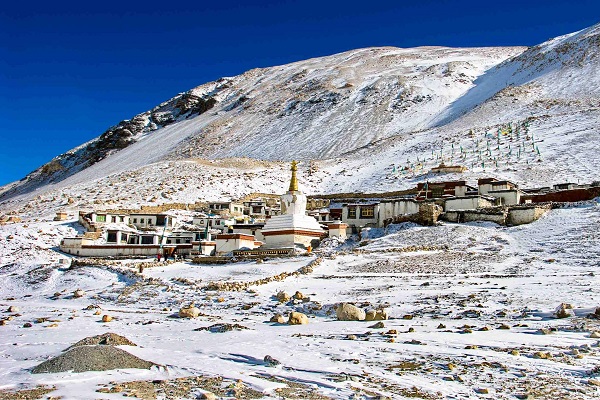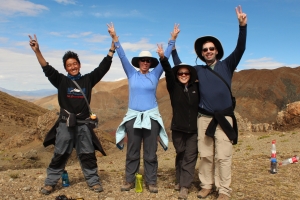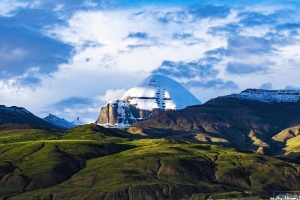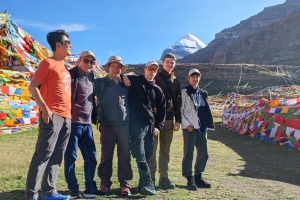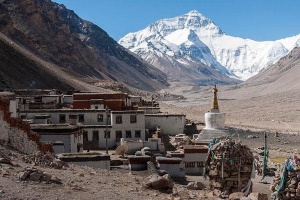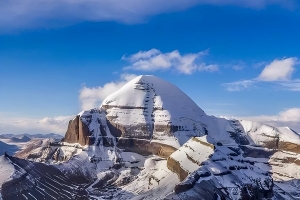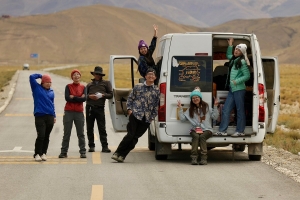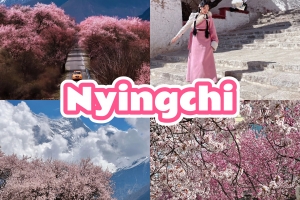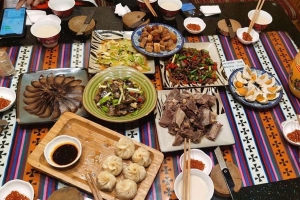The Highest Monastery in the World
Rongbuk Monastery, standing at an elevation of 4,980 meters (16,340 feet), is the highest monastery in the world. Nestled in the shadow of Mount Everest, it serves as a spiritual haven for monks, nuns, and travelers alike. Located in Tibet’s Tingri County, the monastery is a sacred site for Tibetan Buddhism and a crucial stop for those making the pilgrimage to Everest Base Camp (EBC).
Founded in 1902 by Ngawang Tenzin Norbu, a prominent Nyingma lama, Rongbuk has long been a place of meditation and monastic life. The site, however, had been used for spiritual retreats for centuries before the monastery’s formal establishment. Today, it remains a vital cultural and religious center, despite the political and environmental challenges it has faced over the years.
Two Rongbuk Monasteries
Many visitors are surprised to learn that there are actually two Rongbuk Monasteries: Upper Rongbuk and Lower Rongbuk. The Upper Rongbuk Monastery, the more famous of the two, is located near Everest Base Camp and is the main site that travelers and climbers visit. Lower Rongbuk, situated farther down the valley, was historically a larger and more significant religious center. Over time, however, Upper Rongbuk gained prominence due to its proximity to Everest, while Lower Rongbuk declined in importance.
Today, the remnants of Lower Rongbuk still exist, but it is less frequently visited. Despite this, both sites are part of the same spiritual and historical lineage, reflecting the deep-rooted Buddhist traditions in the region.
A Monastic Sanctuary for All
Unlike many monasteries that strictly separate monks and nuns, Rongbuk follows a unique tradition where both men and women can practice Buddhism side by side. The monastery historically supported a network of meditation caves in the surrounding cliffs, where hermits would isolate themselves for deep spiritual practice. These caves remain a testament to the devotion and discipline of generations of Buddhist practitioners.
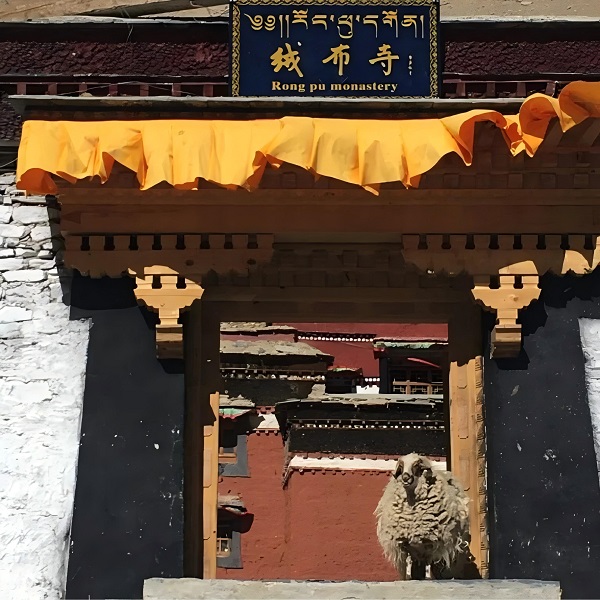
The monastery belongs to the Nyingma school of Tibetan Buddhism, which is the oldest of the four major schools. Known for its emphasis on mystical teachings, tantric practices, and ancient rituals, Nyingma Buddhism has left an indelible mark on Rongbuk’s spiritual culture.
A Pilgrimage and Expedition Hub
For mountaineers and pilgrims alike, Rongbuk Monastery is more than just a place of worship; it is a gateway to Everest. Before modern roads were built, the monastery was a crucial resting point for travelers heading to the world’s highest peak. Even today, many trekkers stop at Rongbuk for spiritual blessings before attempting the arduous journey to EBC and beyond.
Historically, early Western explorers of Everest, such as George Mallory and his team in the 1920s, passed through Rongbuk on their way to the mountain. It served as a meeting place for mountaineers, Sherpas, and Tibetan locals, blending different cultures and traditions in a remote yet globally significant setting.
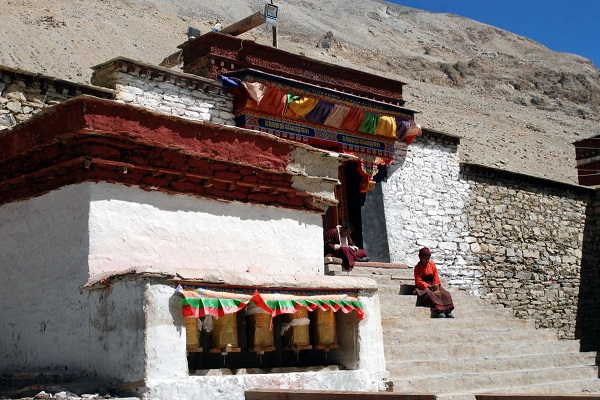
Stories of Resilience
Rongbuk Monastery has faced its share of challenges. During the Cultural Revolution in the 1960s, the monastery suffered extensive damage, with many of its buildings destroyed. However, in the 1980s, efforts were made to rebuild and restore it. Today, while the monastery is much smaller than in its prime, it still stands as a symbol of resilience and faith.
Monks and nuns continue their daily prayers and rituals despite the harsh climate and limited resources. The monastery’s main prayer hall, adorned with colorful murals and sacred relics, remains a place of peace and spiritual reflection for visitors. The breathtaking view of Everest from the monastery’s courtyard adds to its mystical aura, reinforcing its significance as a sacred site.
Rongbuk’s Cultural and Religious Significance
Rongbuk is home to annual religious festivals, where traditional masked dances, known as Cham, are performed to drive away evil spirits and celebrate Buddhist teachings. These festivals attract devotees from across Tibet and beyond, keeping ancient traditions alive in the face of modernization and changing times.
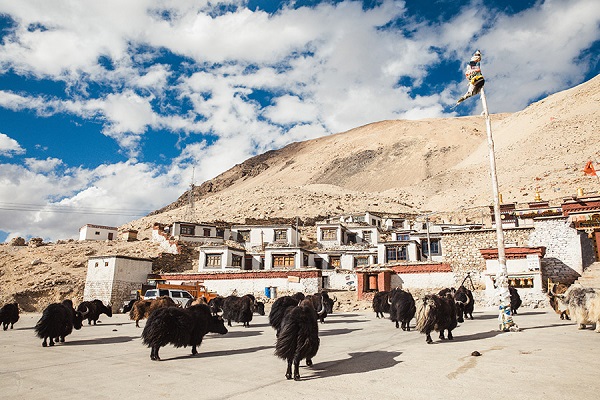
Additionally, the monastery plays a role in preserving Tibetan Buddhist scriptures, teachings, and rituals. Monks and nuns at Rongbuk continue to chant age-old prayers, offering blessings to travelers and maintaining the spiritual essence of the region.
A Journey Through Time and Faith
Visiting Rongbuk Monastery is a journey through history, faith, and breathtaking natural beauty. Whether one is a devout Buddhist, an adventurous traveler, or simply someone in search of serenity, the monastery offers an experience unlike any other. Against the backdrop of the towering Everest, Rongbuk stands as a reminder of humanity’s enduring spiritual quest, connecting the past with the present and the earthly with the divine.

